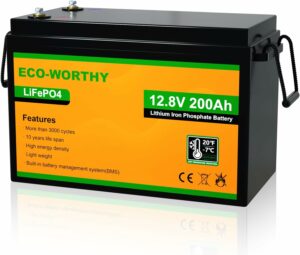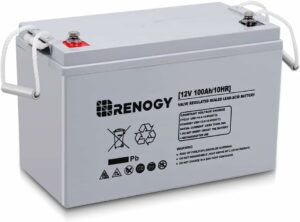SOLAR BATTERY OFF-GRID
Solar Battery Off-Grid
Introduction
In sustainable energy, off-grid solar battery systems emerge as catalysts for independence. These systems liberate users from conventional power grids, storing solar energy for reliable, autonomous use.
By embracing off-grid solar, individuals and communities redefine their relationship with power, tapping into a greener, more self-sufficient future. This introduction sets the stage for a profound exploration into a transformative energy paradigm.
Provo Green Products embodies a beacon of trust in sustainable discoveries, offering choices that enhance your life and leave a positive mark on our planet.
Leveraging extensive expertise in manufacturing, construction, and various trades, we provide a solid foundation for sustainable living.
Our meticulous research process guarantees that our information about each product is precise and current, allowing you to make informed decisions.
Whether your interest lies in solar products, electric bikes, or other eco-friendly alternatives, our commitment to credibility ensures you have access to dependable insights, guiding your journey toward a more sustainable lifestyle.
Provo Green Products is your go-to destination for finding the right green products for your lifestyle.
Disclosure: We may earn a small commission if you click on one of our links. This will not affect the pricing of the product whatsoever.
Key Components of Off-Grid Solar Battery Systems
Off-grid solar battery systems comprise several essential components, each crucial in harnessing, storing, and utilizing solar energy.
Understanding these components is fundamental to designing and maintaining an efficient off-grid solar setup.
- Solar Panels:
- Types: Monocrystalline, polycrystalline, thin-film.
- Efficiency considerations: Choosing panels based on energy conversion efficiency.
- Orientation and tilt: Optimizing panel placement for maximum sunlight exposure.
- Charge Controllers:
- Function: Regulating the voltage and current from solar panels to prevent overcharging of batteries.
- Types: PWM (Pulse Width Modulation) vs. MPPT (Maximum Power Point Tracking).
- Importance in battery longevity: Protecting batteries from damage due to overcharging or deep discharging.
- Battery Storage:
- Types: Lead-acid, lithium-ion, and emerging technologies.
- Capacity considerations: Sizing the battery bank based on energy consumption patterns and autonomy requirements.
- Depth of Discharge (DoD): Understanding and optimizing battery usage to prolong lifespan.
- Inverters:
- Function: Converting DC (direct current) from batteries to AC (alternating current) for household appliances.
- Types: Pure sine wave vs. modified sine wave inverters.
- Choosing the right size: Matching the inverter capacity with the total load requirements.
- Wiring and Connectors:
- Proper gauge selection: Ensuring minimal power loss in the wiring.
- Connection safety: Following industry standards for secure and reliable connections.
- Maintenance considerations: Regularly inspect and maintain wiring for optimal performance.
Understanding how these components interact is crucial for designing a reliable and efficient off-grid solar battery system.
Each component contributes to the system’s overall effectiveness in capturing solar energy, storing it efficiently, and converting it for practical use in homes or off-grid locations.
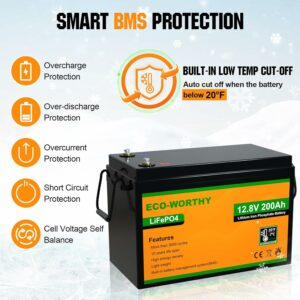
Designing an Efficient Off-Grid Solar Battery System
Designing an effective off-grid solar battery system requires careful consideration of various factors to ensure optimal performance, reliability, and longevity.
This section explores the key aspects involved in the design process.
- Sizing Considerations for Solar Panels:
- Energy Consumption Analysis: Begin by assessing the energy needs of the household or facility. Evaluate daily and seasonal variations to determine the average energy consumption.
- Location-Specific Factors: To estimate solar panel output, consider geographical location, sunlight hours, and weather patterns.
- System Sizing Tools: Utilize online tools or consult with professionals to determine the optimal number and configuration of solar panels.
- Calculating Battery Capacity:
- Daily Energy Requirements: Calculate the amount of energy needed daily by the appliances and systems powered by the solar battery system.
- Autonomy Needs: Determine the desired autonomy, i.e., the days the system should operate without sunlight.
- Depth of Discharge (DoD): Set appropriate DoD levels to balance battery lifespan and system performance.
- Choosing the Right Inverter:
- Inverter Efficiency: Consider the inverter’s efficiency, as it influences the overall energy conversion process.
- Sine Wave Quality: Opt for pure sine wave inverters for compatibility with various electronic devices.
- Inverter Sizing: Match the inverter capacity with the total load requirements, considering peak loads.
- Optimizing Charge Controller Settings:
- Charge Controller Type: Choose between PWM and MPPT controllers based on system requirements.
- Voltage Settings: Configure voltage settings to ensure proper battery charging without overloading or undercharging.
- Temperature Compensation: Implement temperature compensation features for improved battery charging efficiency.
- System Redundancy and Safety Measures:
- Redundancy Planning: Incorporate redundancies in critical components to enhance system reliability.
- Safety Protocols: Implement safety measures for wiring, overcurrent protection, and system grounding.
- Emergency Power Sources: Plan for alternative power sources or backup generators for extended periods of low sunlight.
Designing an efficient off-grid solar battery system is a delicate balance of understanding energy needs, environmental conditions, and the capabilities of system components.
One can create a robust and sustainable energy solution tailored to specific requirements by carefully considering these factors.
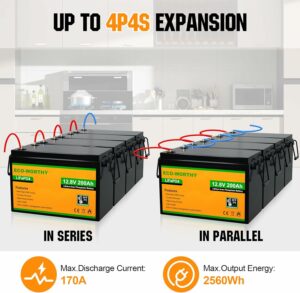
Installation and Maintenance of Solar Battery Off-Grid Systems
Installing and maintaining an off-grid solar battery system requires a systematic approach to ensure safety, efficiency, and prolonged system life.
This section covers the essential steps in installation and ongoing maintenance processes.
- Step-by-Step Installation Process:
- Site Assessment: Conduct a thorough site assessment to identify the optimal location for solar panels, considering factors such as sunlight exposure, shading, and local regulations.
- Mounting Solar Panels: Install solar panels securely, adhering to manufacturer guidelines and local building codes. Pay attention to proper tilt and orientation for maximum energy capture.
- Wiring and Connection: Follow industry standards for wiring and connections, ensuring proper gauge selection and secure connections between solar panels, charge controllers, batteries, and inverters.
- Inverter Installation: Install the inverter in a well-ventilated area, considering factors like heat dissipation and proximity to the battery bank.
- Safety Precautions During Installation:
- Electrical Safety: Adhere to safety protocols when working with electrical components. Use appropriate personal protective equipment (PPE) and follow safety guidelines to prevent electrical hazards.
- Structural Integrity: Ensure that any structural modifications made during installation, such as roof penetrations for panel mounting, meet safety standards and do not compromise the integrity of the building.
- Routine Maintenance Tasks:
- Cleaning Solar Panels: Regularly clean solar panels to remove dirt, dust, and debris that can reduce efficiency. Use a soft brush or sponge and mild detergent, and avoid abrasive materials that could scratch the panels.
- Inspecting Wiring and Connections: Periodically inspect wiring and connections for signs of wear, corrosion, or damage. Tighten any loose connections and replace damaged components promptly.
- Battery Maintenance: Monitor battery levels regularly, checking for proper charging and discharging. Follow manufacturer guidelines for specific maintenance tasks, such as topping up water levels for lead-acid batteries.
- Inverter Checks: Verify the performance of the inverter, checking for any error codes or unusual behavior. Ensure proper ventilation to prevent overheating.
- Troubleshooting Common Issues:
- Battery Issues: Diagnose and promptly address overcharging, undercharging, or capacity loss.
- Inverter Failures: Investigate and resolve inverter-related problems, such as malfunctions or compatibility issues with connected devices.
- Electrical Faults: Implement a systematic approach to identify and rectify electrical faults, ensuring the safety and reliability of the entire system.
Following a comprehensive installation process and adhering to routine maintenance practices, users can maximize the efficiency and lifespan of their off-grid solar battery systems while minimizing the risk of malfunctions or safety hazards.
Regularly monitoring and promptly resolving issues contribute to a reliable and sustainable energy solution.
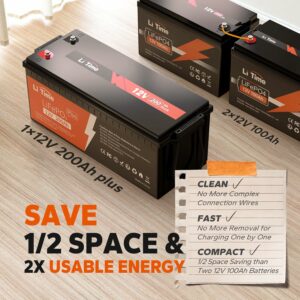
Economic and Environmental Impact of Off-Grid Solar Batteries
Understanding the economic and environmental implications of off-grid solar batteries is essential for evaluating the long-term benefits of these systems.
This section explores the multifaceted impact, including cost considerations, environmental sustainability, and broader societal benefits.
- Cost Analysis: Initial Investment vs. Long-Term Savings
- Initial Investment: Off-grid solar battery systems typically involve an initial investment for purchasing solar panels, batteries, inverters, and other components. Consideration of installation costs is also crucial.
- Return on Investment (ROI): Assess the potential ROI by comparing the upfront costs with the long-term savings on energy bills—factor in available incentives, tax credits, or rebates that can contribute to the overall cost-effectiveness.
- Payback Period: Determine the payback period—the time it takes for the system to offset its initial cost through energy savings.
- Environmental Benefits of Off-Grid Solar
- Reduced Carbon Footprint: Off-grid solar systems significantly reduce reliance on traditional energy sources, minimizing the carbon footprint associated with fossil fuel-based power generation.
- Renewable Energy Generation: Solar energy is a clean and renewable resource, and off-grid systems harness this energy without depleting natural resources or contributing to air and water pollution.
- Mitigating Climate Change: By transitioning to off-grid solar, individuals and communities contribute to global efforts to mitigate climate change, as solar energy is a key component of sustainable, low-carbon solutions.
- Case Studies: Successful Off-Grid Solar Implementations
- Residential Applications: Explore case studies of successful off-grid solar implementations in residential settings, highlighting the experiences of homeowners who have achieved energy independence.
- Community Initiatives: Examine examples of off-grid solar projects in communities, showcasing how decentralized energy solutions empower local residents and contribute to sustainable development.
- Industrial and Commercial Use: Investigate instances where off-grid solar has been effectively integrated into industrial and commercial operations, demonstrating the versatility and scalability of these systems.
- Future Trends in Solar Battery Technology
- Advancements in Battery Technology: Explore emerging technologies that enhance storage capacity, efficiency, and lifespan, paving the way for even more reliable off-grid solar systems.
- Integration with Smart Technologies: Investigate how off-grid solar systems integrate with smart technologies, enabling more efficient energy management and enhanced user control.
- Increasing Affordability: Consider trends in the affordability of solar technology, making off-grid solutions more accessible to a broader range of individuals and communities.
Assessing off-grid solar batteries’ economic and environmental impact involves comprehensively analyzing immediate and long-term factors.
By weighing the financial benefits, environmental advantages, and technological advancements, individuals and communities can make informed decisions that align with their sustainability goals and contribute to a more resilient and eco-friendly energy landscape.
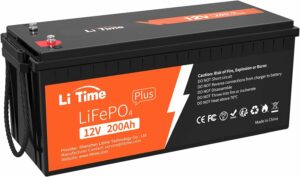
Conclusion
Adopting off-grid solar battery systems represents a pivotal stride towards sustainable energy practices.
Beyond mere economic considerations, these systems empower individuals and communities to break free from traditional power grids, fostering energy independence.
The environmental dividends are substantial, with reduced carbon footprints and reliance on finite resources.
Real-world case studies illuminate the transformative impact of these systems, showcasing successful implementations across diverse settings.
As technological advancements enhance efficiency and affordability, the future promises a widespread transition to cleaner, decentralized energy solutions.
Off-grid solar batteries are an investment in personal autonomy and a collective commitment to a greener and more resilient energy future.
Stay in Touch!
I’am a dedicated entrepreneur with many years of experience and an integrity-driven individual who is highly motivated to succeed. Leveraging extensive expertise in manufacturing, construction, and various trades, we can provide a solid foundation for sustainable living. Our meticulous research process guarantees that our information about each product is precise and current, allowing you to make informed decisions. A deep understanding of business operations empowers me to consistently implement improvements that result in ongoing success. Visit site.

